The first Blackfriars Bridge was designed by Robert Mylne and openened in 1769. It was constructed from Portland Stone which, although attractive, was quickly weakened by damage from barges, ice and pollution …
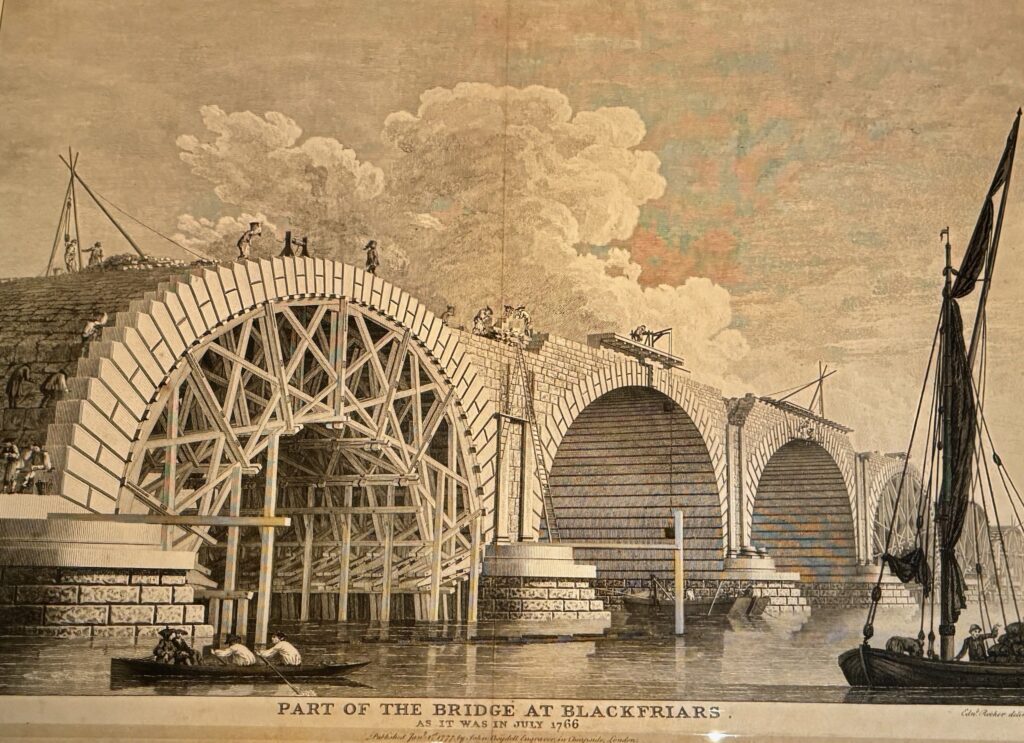

The bridge in 1762, a painting by William Marlow …

Gradually its foundations started to become undermined and by the 1850s it was apparent that continual repair was not feasible and the bridge had to be replaced. The new bridge was designed by Joseph Cubitt (1811-1872) who also designed the adjacent railway bridge …

The foundation stone was laid by the Lord Mayor on 25 July 1865 – here’s an invitation to the event …
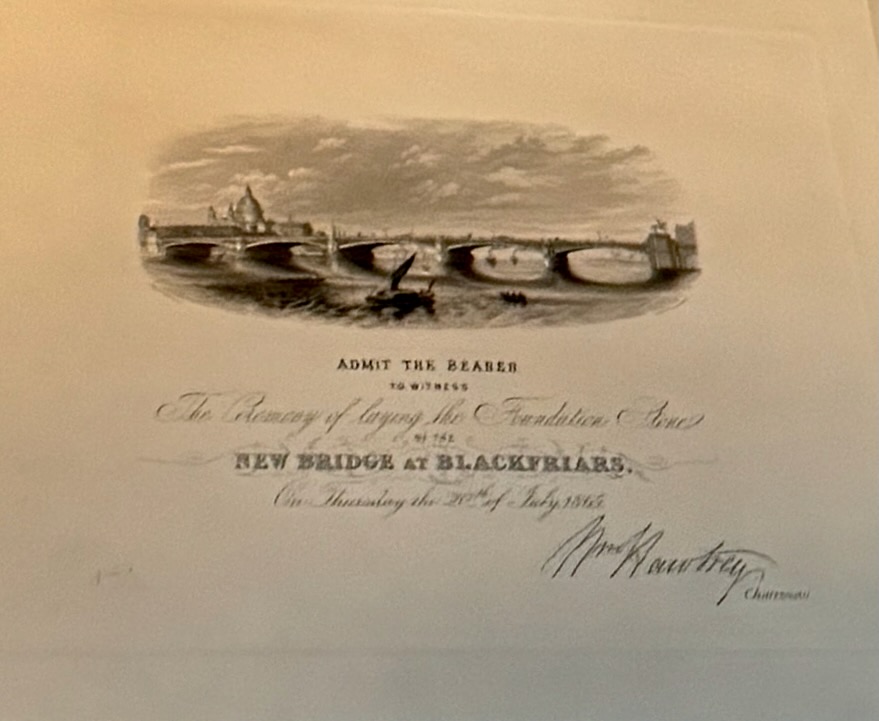
Under construction in 1868 …

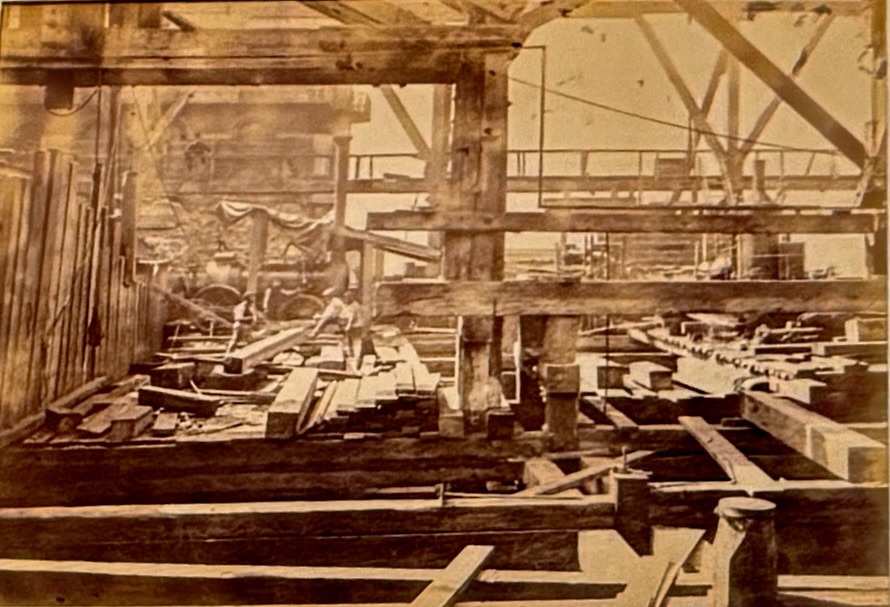
Divers wearing what was then modern gear invented in the 1830s …
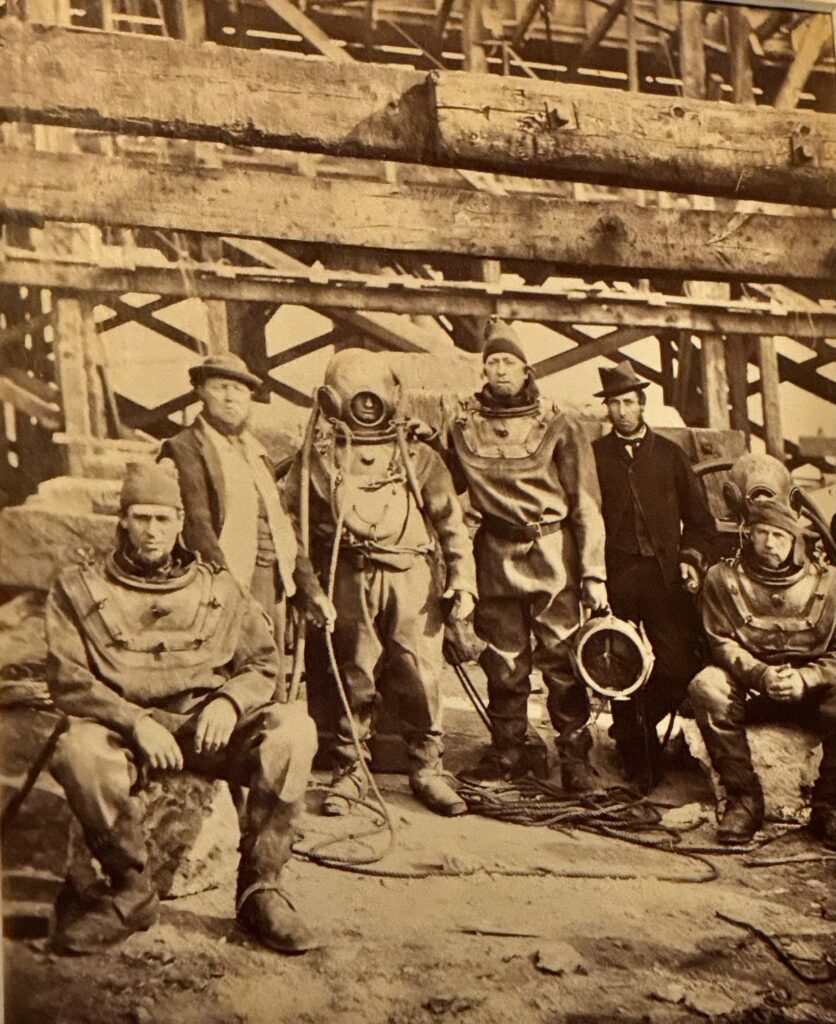
The formal opening by Queen Victoria in 1869 …


The bridge in 1896 with the station under development …
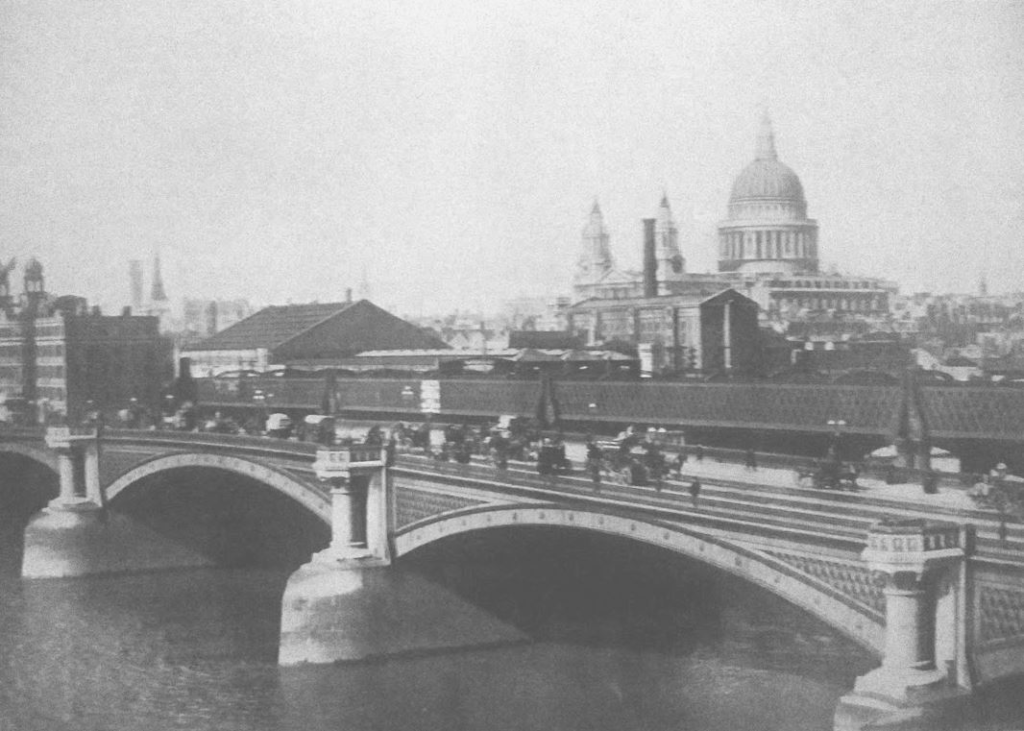
Image from (probably) 1914 …

Here are a few things to look out for as you cross the bridge today.
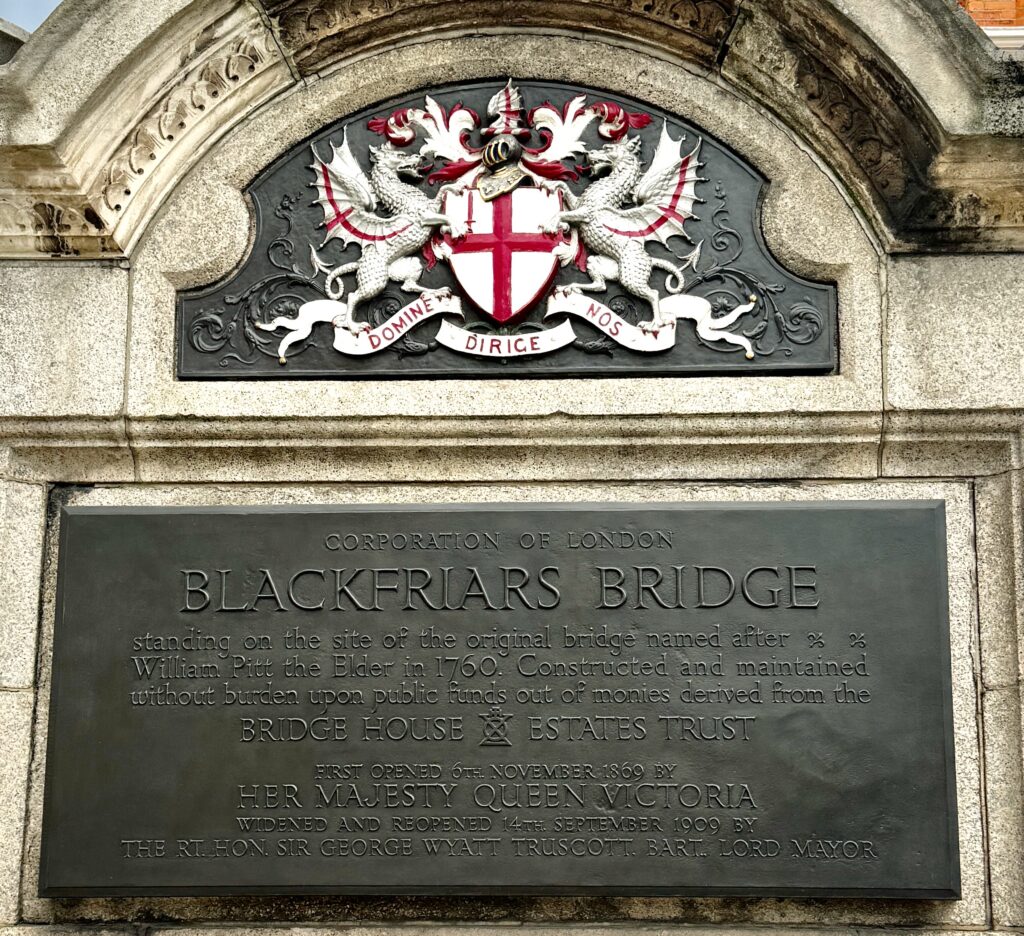
There are a series of columns rising out of the river …
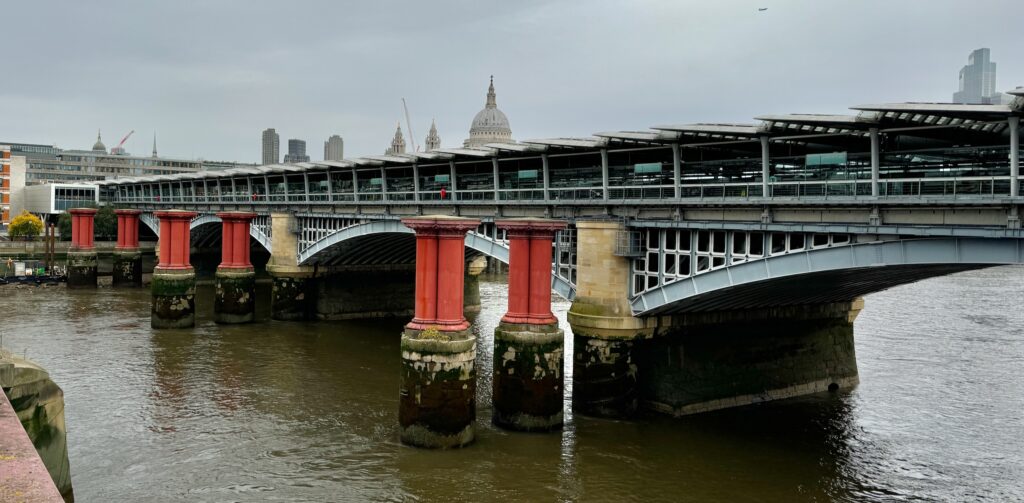
These are the remains of the original railway bridge, which was removed in 1985 as it was deemed too weak for modern trains.
Note the pulpit-shaped tops of the bridge pillars. They reference the original monastery of the Black Friars or Dominican monks, evicted by Henry VIII during the dissolution of the monasteries in 1538. I have written about the Medieval monasteries in an earlier blog which you can find here …
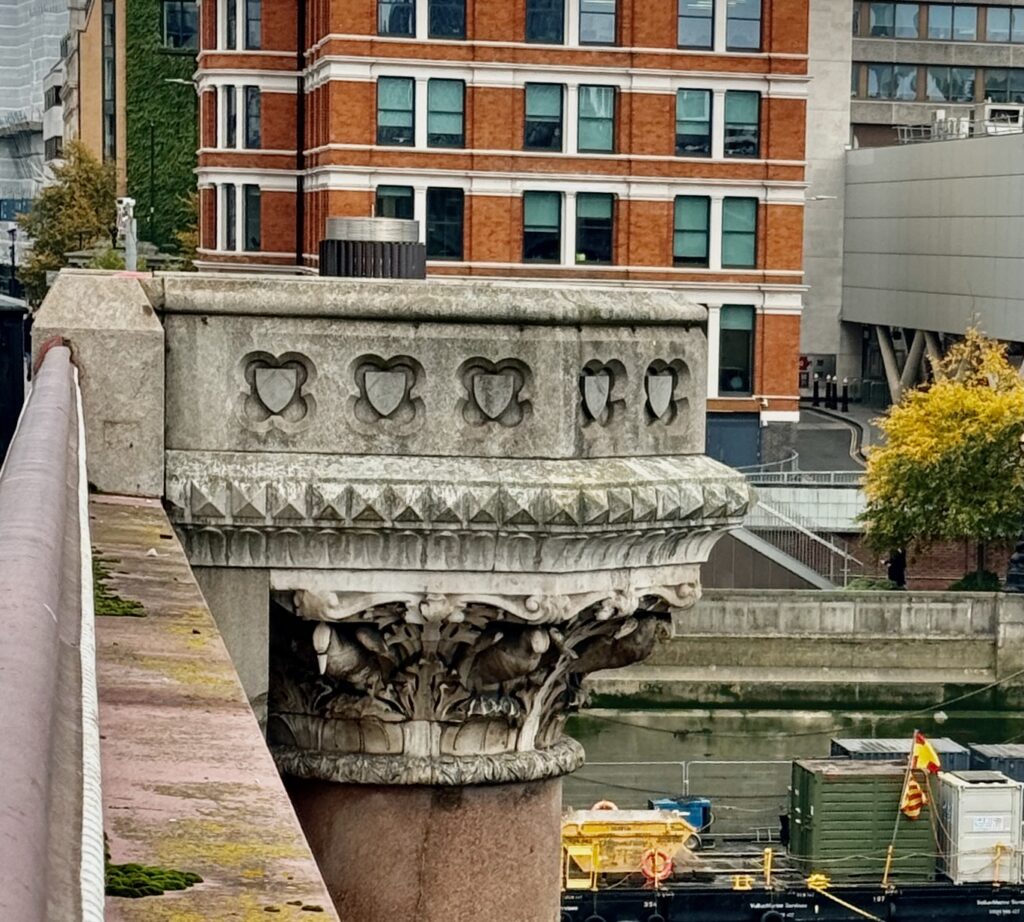
On the south side is the beautifully painted coat of arms of the London Chatham & Dover Railway …
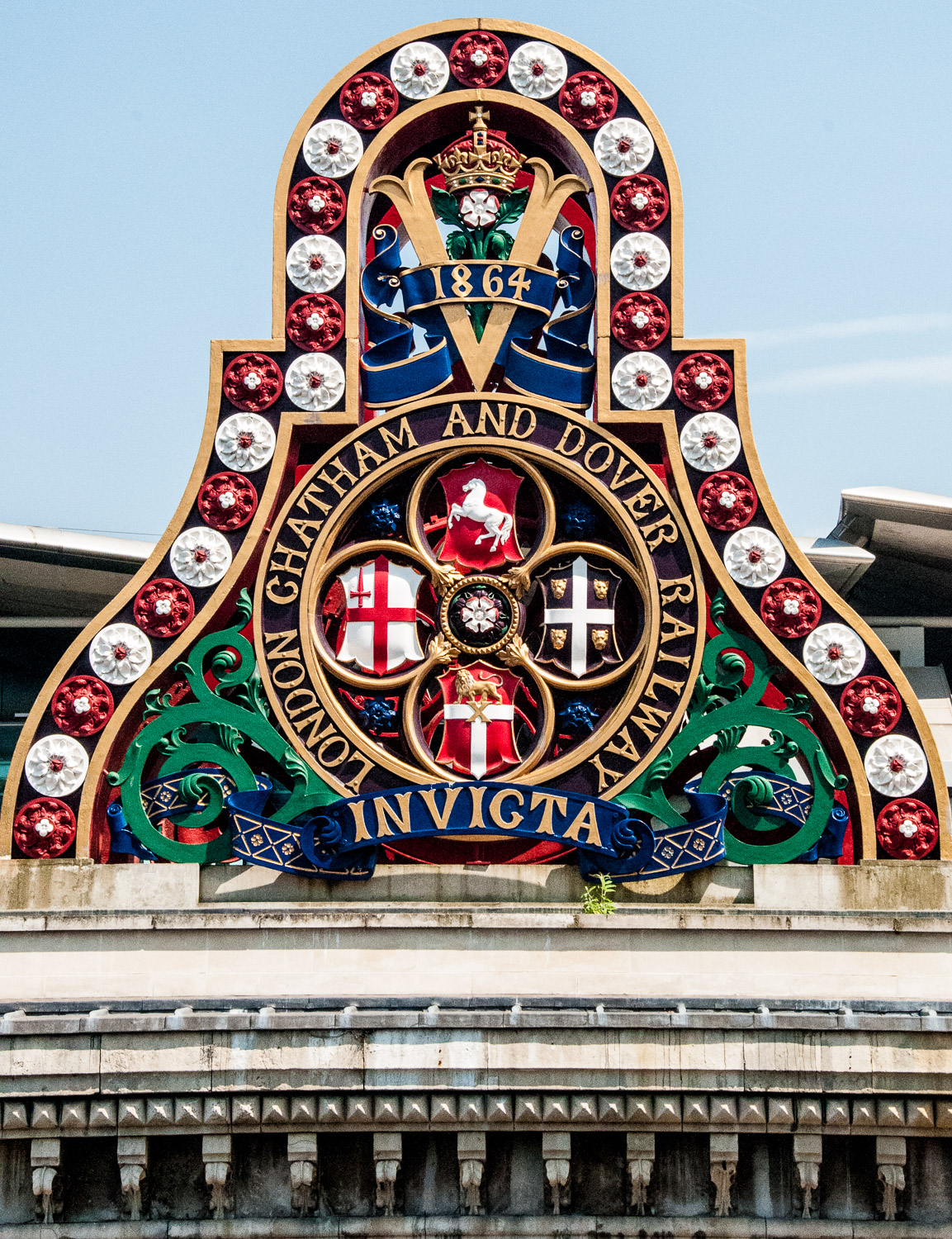
And now some features not everyone notices. Peer over the parapet and on either side you will see some birds on the capitals of the bridge supports, meticulously carved in Portland stone by J.B.Philip.
The birds on the west side are fresh water birds and plants to be found on the upper reaches of the river …
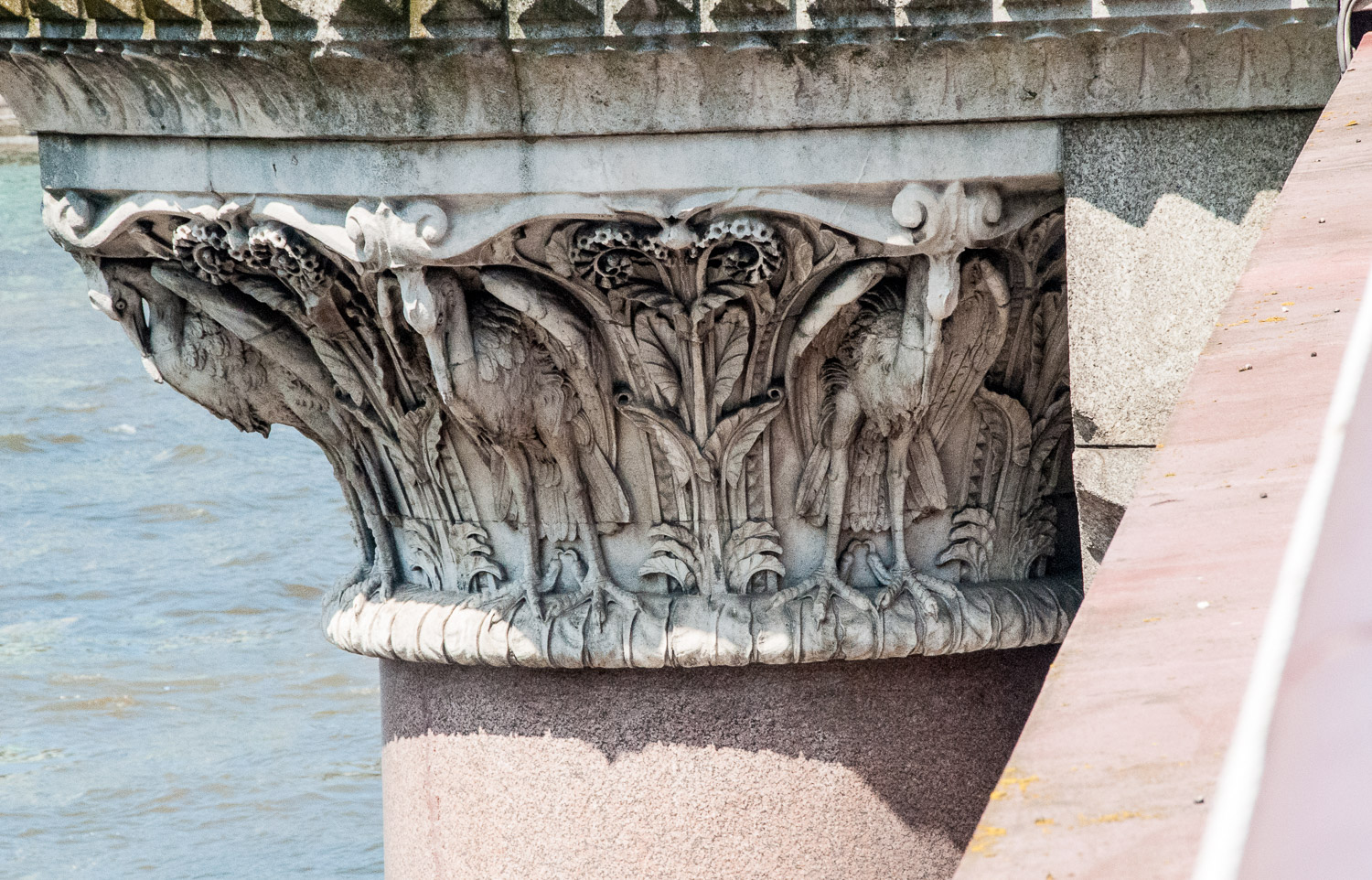
And on the east side, sea birds and seaweeds to be found at the mouth of the Thames …
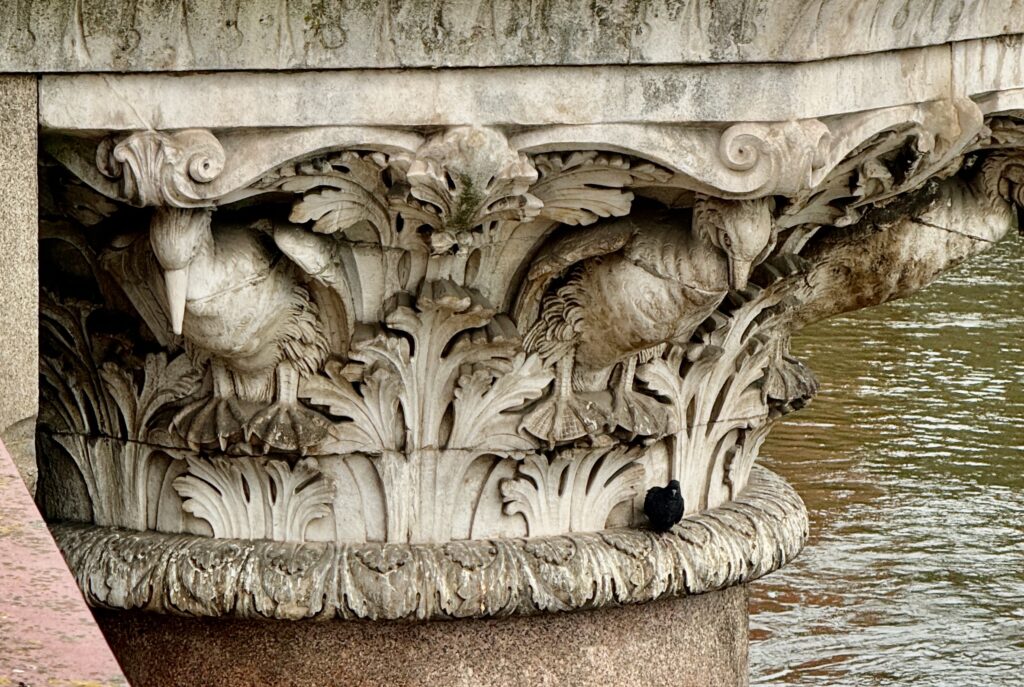
On the north side of the bridge is one of my favourite water fountains, recently liberated from behind hoardings and nicely restored …
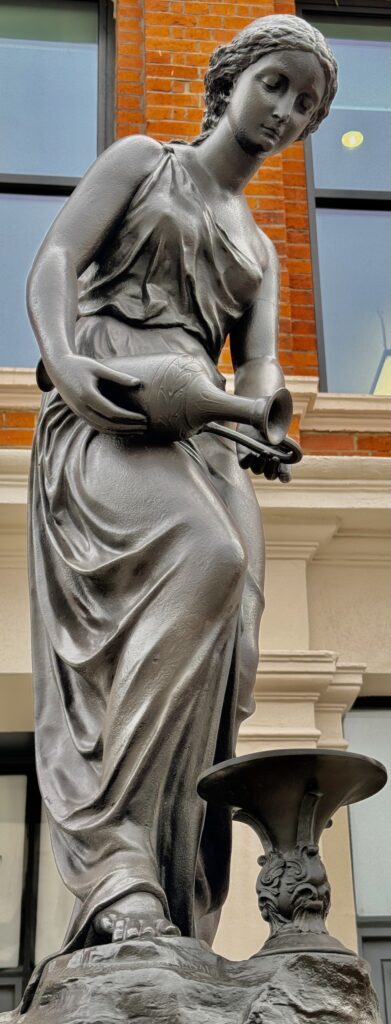
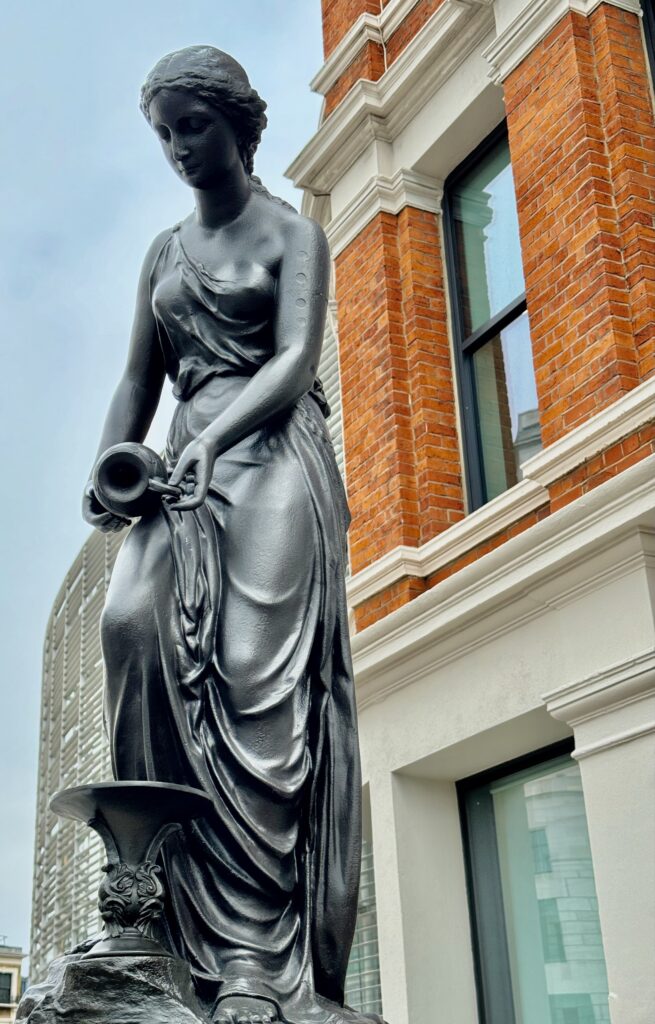
The pretty lady represents ‘Temperance’ and she originally stood outside the Royal Exchange. You can see an image of her in that position here.
The fountain was inaugurated by Samuel Gurney, MP, the Chairman of the Metropolitan Free Drinking Fountains Association, on 27 July 1861 and you can read more about him, and the Association, in my earlier blog Philanthropic Fountains.
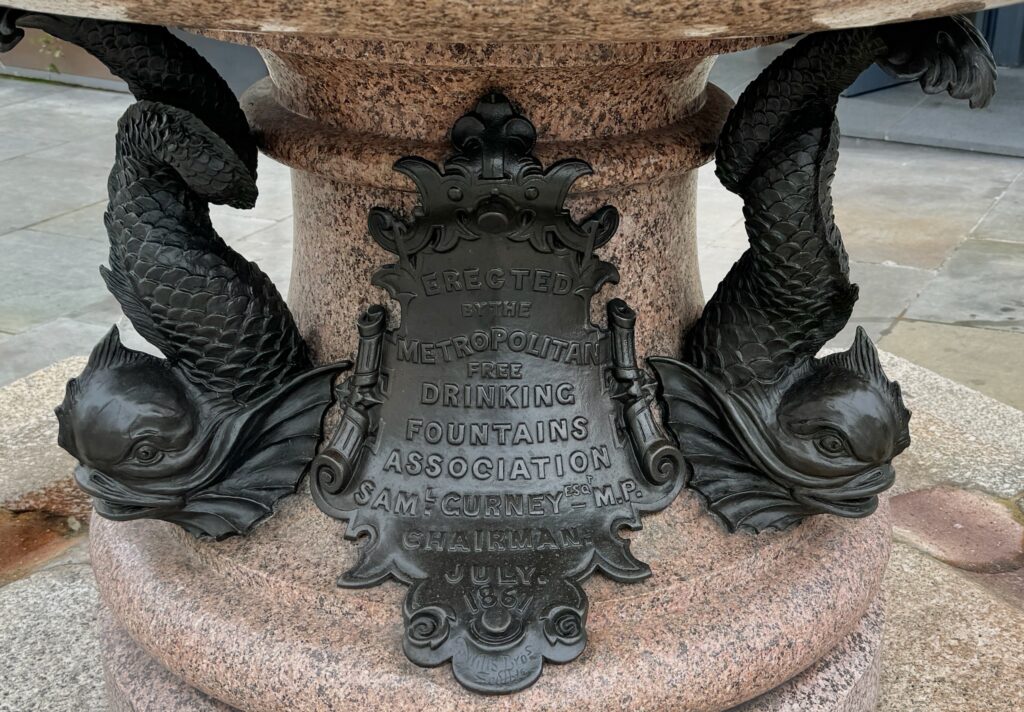
In the middle of the road, Her Majesty gazes imperiously towards the City …
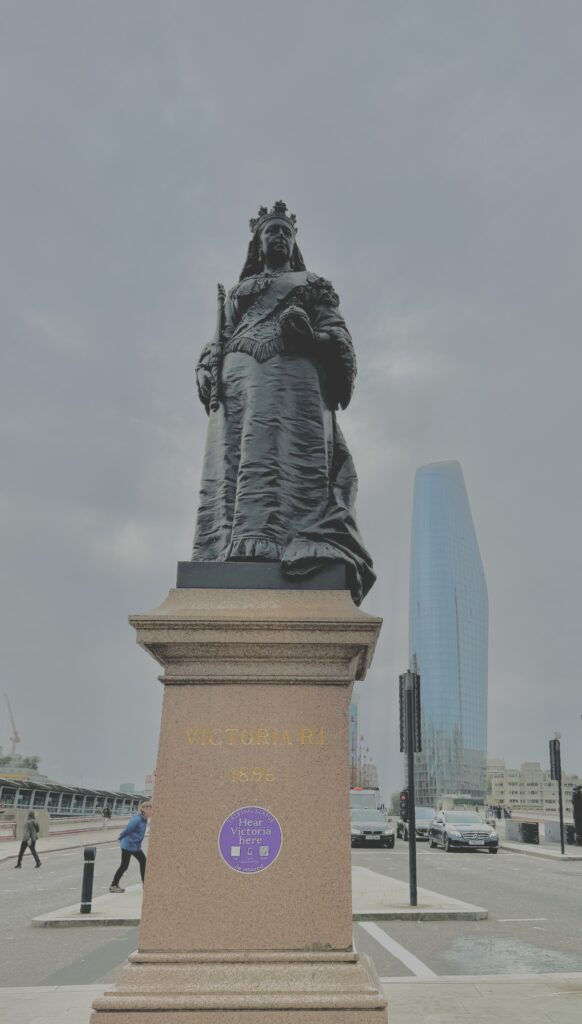
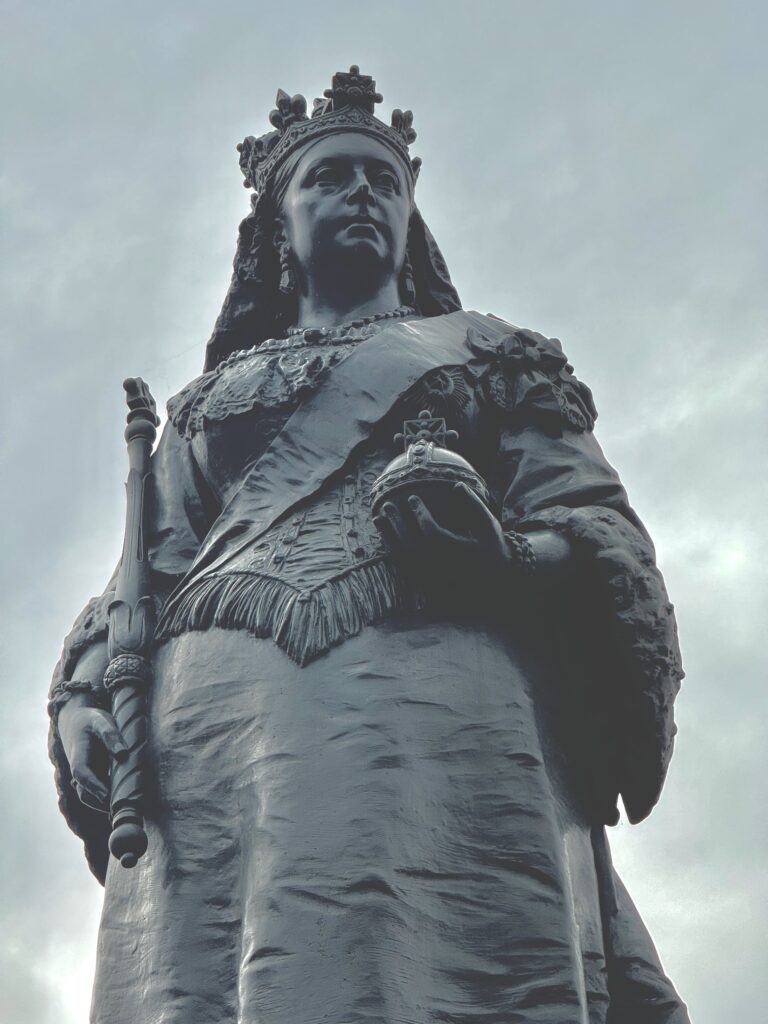
If you get the chance, pop in to the spanking new Blackfriars Station.
Nowadays, if you want to travel by rail to Continental Europe, you head for St Pancras International and Eurostar. Once upon a time though, your gateway to the Continent was Blackfriars Station.
The station was badly damaged during the Second World War but the wall displaying a selection of the locations you could catch a train to survived and you can see it today in the ticket hall. It was part of the original façade of the 1886 station (originally known as St Paul’s) and features the names of 54 destinations – each painstakingly carved into separate sandstone blocks …
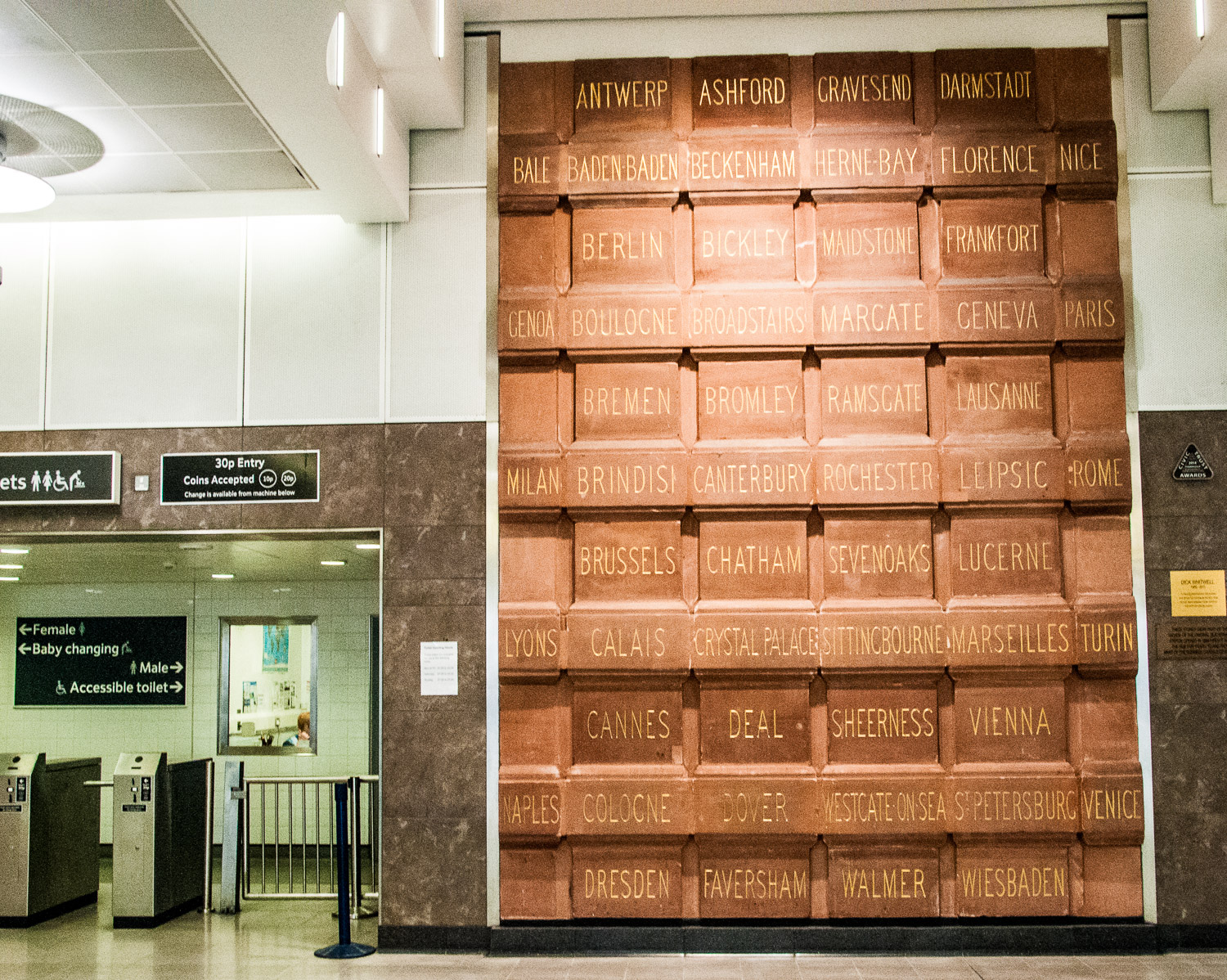
The destinations are gilded in 24 carat gold leaf …
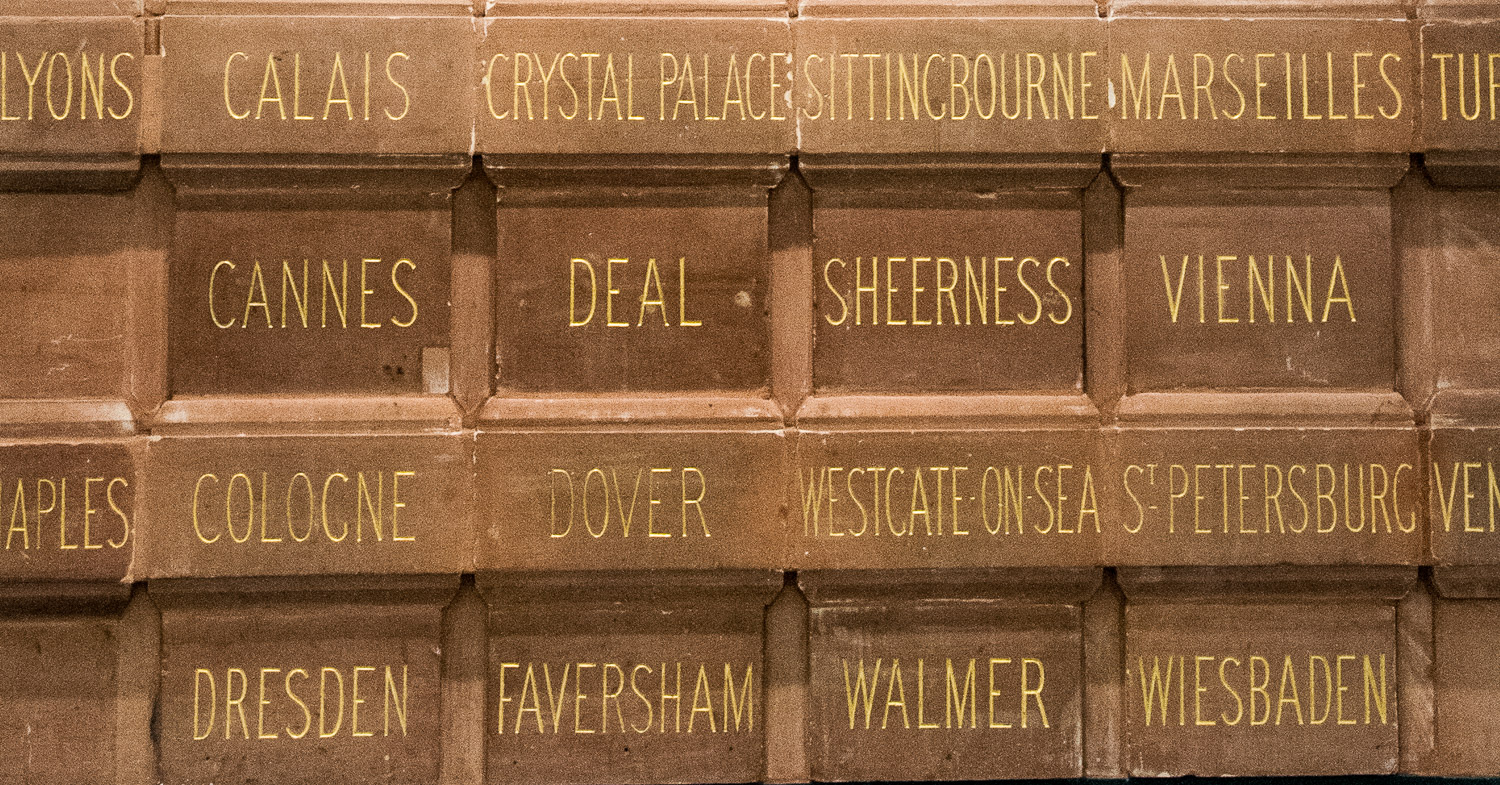
‘Where shall we buy a ticket to today? Crystal Palace or Marseilles? Westgate-on-Sea or St Petersburg? Tough choices!’
If you would like to follow me on Instagram here is the link …
